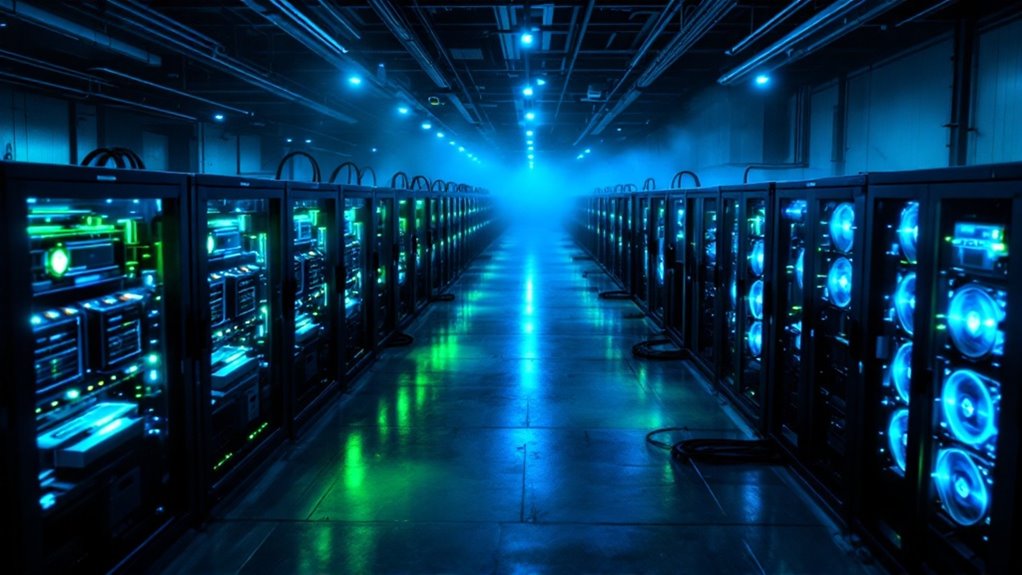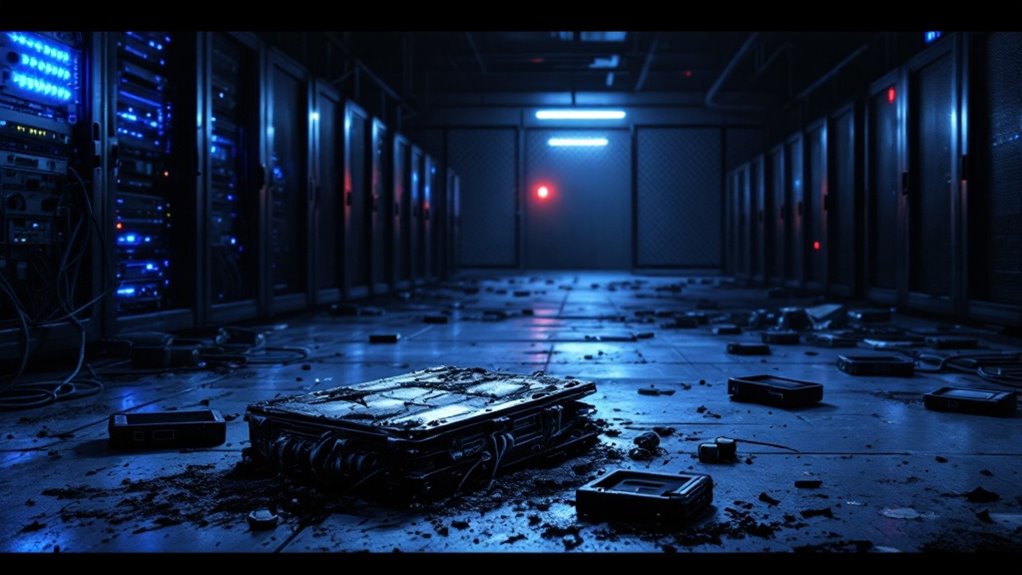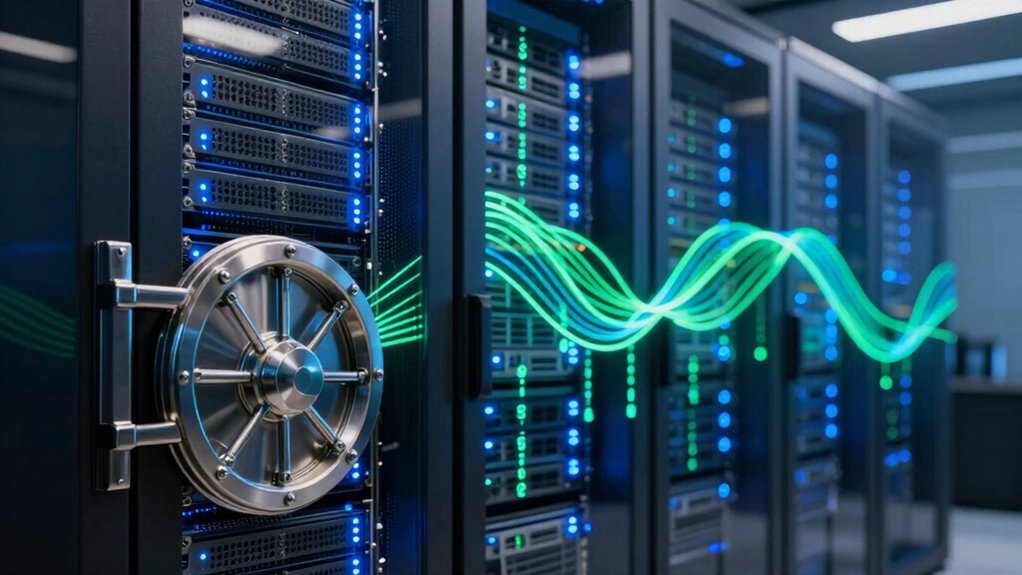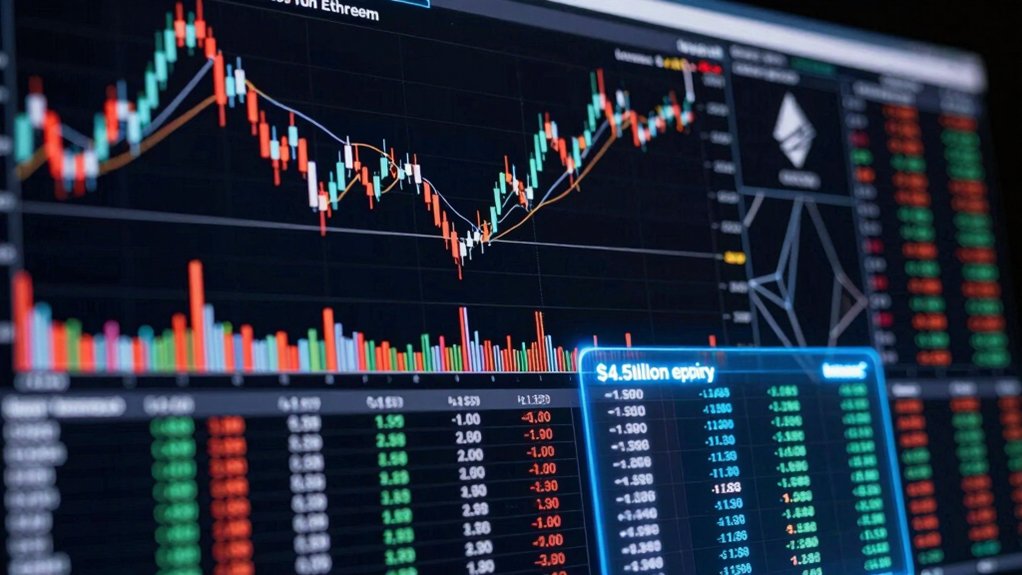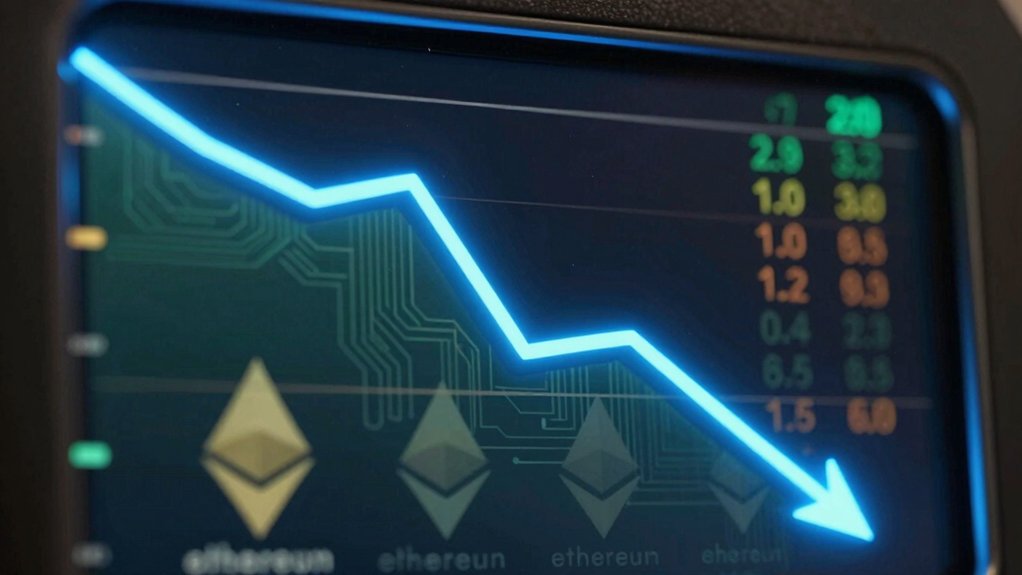Cryptocurrency mining transforms electrical power into digital wealth through specialized computers solving complex mathematical puzzles. These powerful machines, housed in massive warehouses, validate transactions and secure blockchain networks while competing for rewards. Miners combine their computational resources in pools, using specialized chips that crunch numbers like modern-day pickaxes against virtual bedrock. While energy consumption raises environmental concerns, the industry continues evolving toward more sustainable practices. The deeper mechanics of mining reveal an fascinating intersection of economics, technology, and innovation.

Deep within the digital mines of the cryptocurrency world, armies of computers work tirelessly to solve complex mathematical puzzles, their fans whirring like modern-day pickaxes against virtual bedrock.
These machines, ranging from specialized ASICs to high-powered GPUs, compete in a relentless race to validate transactions and secure the blockchain, turning electricity into digital gold with each successful solution. The difficulty target adjusts every two weeks automatically, ensuring consistent block creation regardless of total network computing power. The process is open to anyone with sufficient computing resources and an internet connection.
Modern mining rigs transform raw electrical power into cryptocurrency treasure, their silicon hearts beating in an endless technological race.
The mining process itself is a fascinating dance of mathematics and chance. Miners gather pending transactions from the mempool, carefully arranging them into blocks like digital jewelers crafting elaborate necklaces.
They calculate Merkle roots and hunt for the perfect nonce value, their processors generating millions of attempts per second. When a solution finally emerges, it's broadcast across the network with the satisfaction of a prospector striking gold.
The rewards for this digital labor come in two forms: newly minted coins and transaction fees. Like traditional mining claims that gradually yield less ore, cryptocurrency block rewards decrease over time through scheduled halvings. The massive energy consumption of Bitcoin mining reaches 178 terawatt-hours annually, rivaling the power usage of entire nations.
This engineered scarcity has transformed basement mining operations into industrial-scale facilities, where rows of humming machines fill warehouses from floor to ceiling.
Most miners today join forces in mining pools, combining their computational power like workers in a cooperative. These pools offer steady, predictable income instead of the feast-or-famine approach of solo mining.
Yet this consolidation of power raises eyebrows among cryptocurrency purists who value decentralization above all else.
The environmental impact of this digital gold rush hasn't gone unnoticed. Bitcoin alone consumes more electricity annually than many small countries, prompting a shift toward renewable energy sources and more efficient mining methods.
Some cryptocurrencies are even abandoning the Proof-of-Work model entirely, embracing alternatives like Proof-of-Stake. Despite these challenges, crypto mining continues to evolve, balancing the demands of security, profitability, and sustainability in an increasingly digital world where the pickaxe has been replaced by the semiconductor.
Frequently Asked Questions
What Happens if My Mining Computer Crashes During a Mining Operation?
A mining computer crash interrupts block validation, resulting in lost potential rewards and wasted resources. Mining software typically restarts automatically upon reboot, while unfinished transactions remain in the mempool for future processing.
Can I Mine Different Cryptocurrencies Simultaneously With the Same Equipment?
Yes, miners can simultaneously mine multiple cryptocurrencies using the same equipment through multi-mining setups. However, this requires compatible hardware, specialized software, and proper configuration to effectively distribute computing resources across different coins.
How Long Does It Take to Earn Back Initial Mining Hardware Investments?
ROI timelines typically range from 3-24 months depending on hardware type, electricity costs, and market conditions. GPU rigs average 6-18 months, while ASIC miners can return investment in 3-12 months under ideal circumstances.
Are There Specific Countries or Regions Where Crypto Mining Is Illegal?
Several countries have completely banned cryptocurrency mining, including China, Algeria, Bangladesh, Nepal, and Egypt. Other nations like Morocco, Russia, and Iran maintain partial restrictions or temporary bans based on energy considerations.
What Happens to Mining Operations When a Cryptocurrency Undergoes a Fork?
When cryptocurrencies fork, mining operations face hardware compatibility challenges, hash rate fluctuations, and economic uncertainty. Miners must decide whether to support the original chain, new chain, or both while managing operational adjustments.

